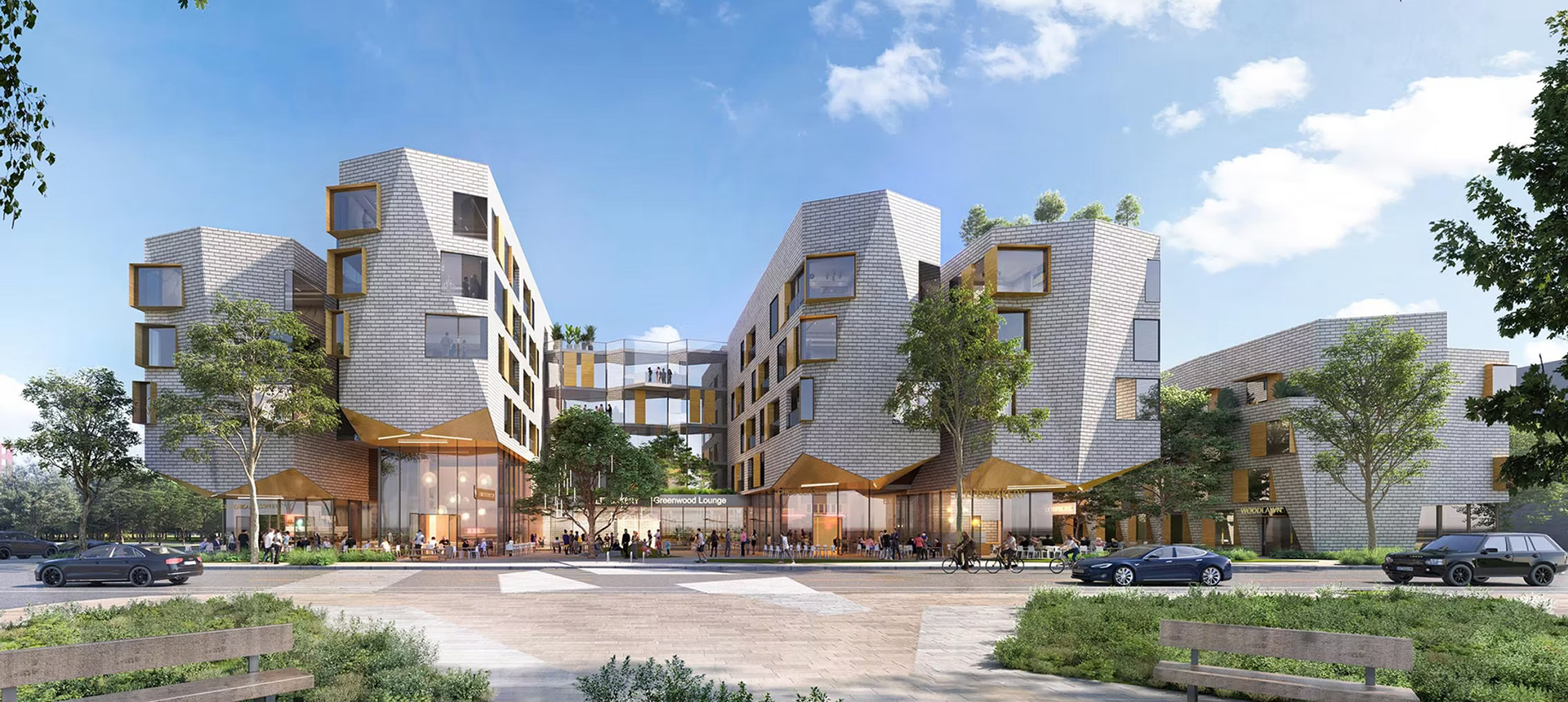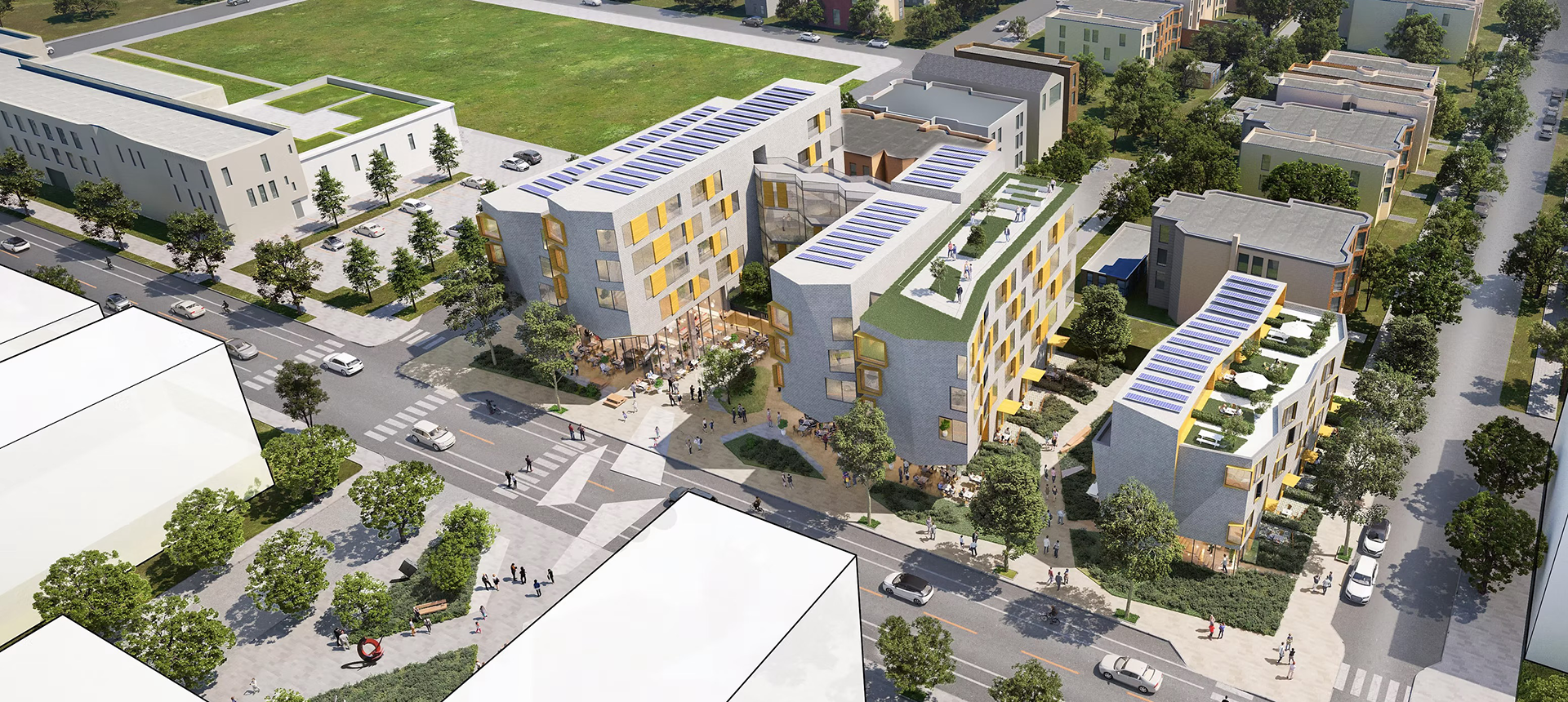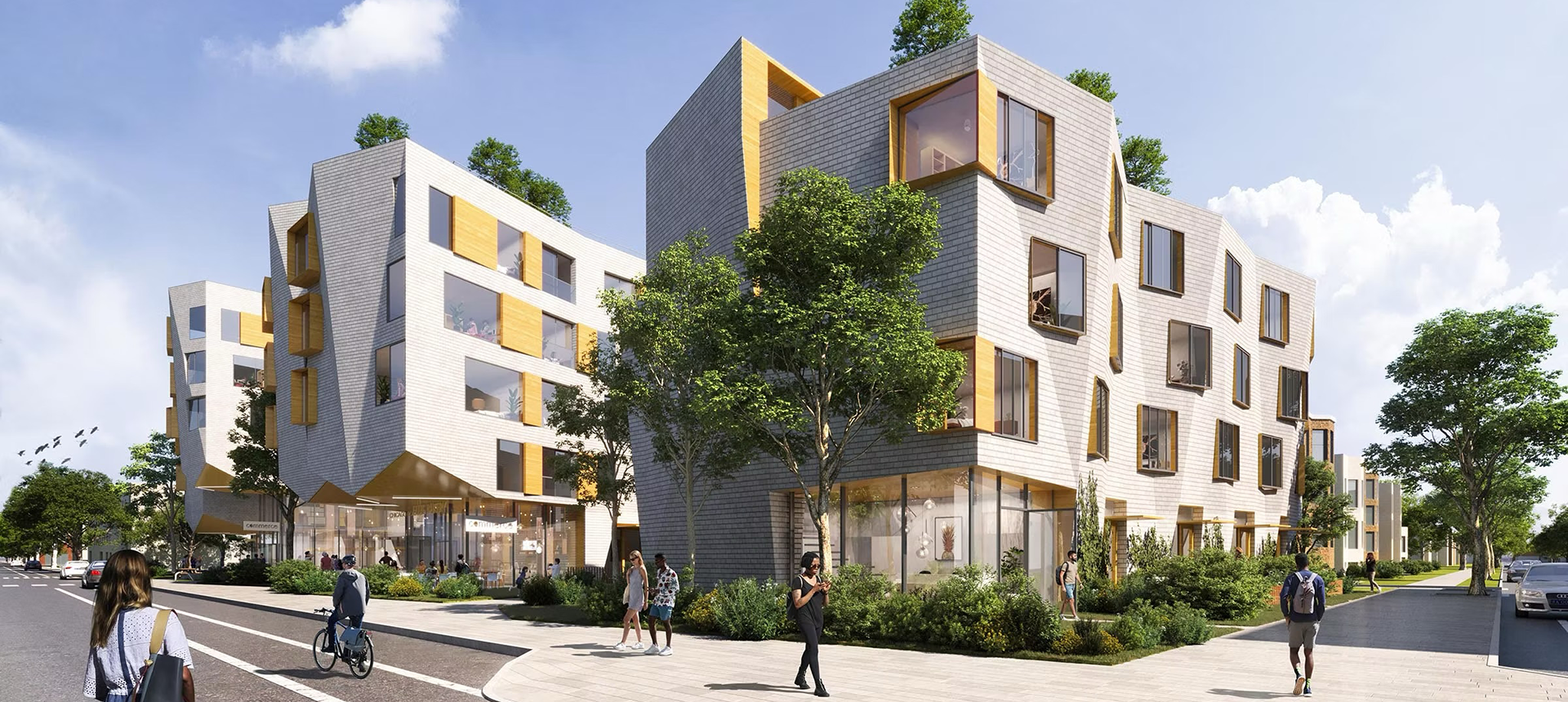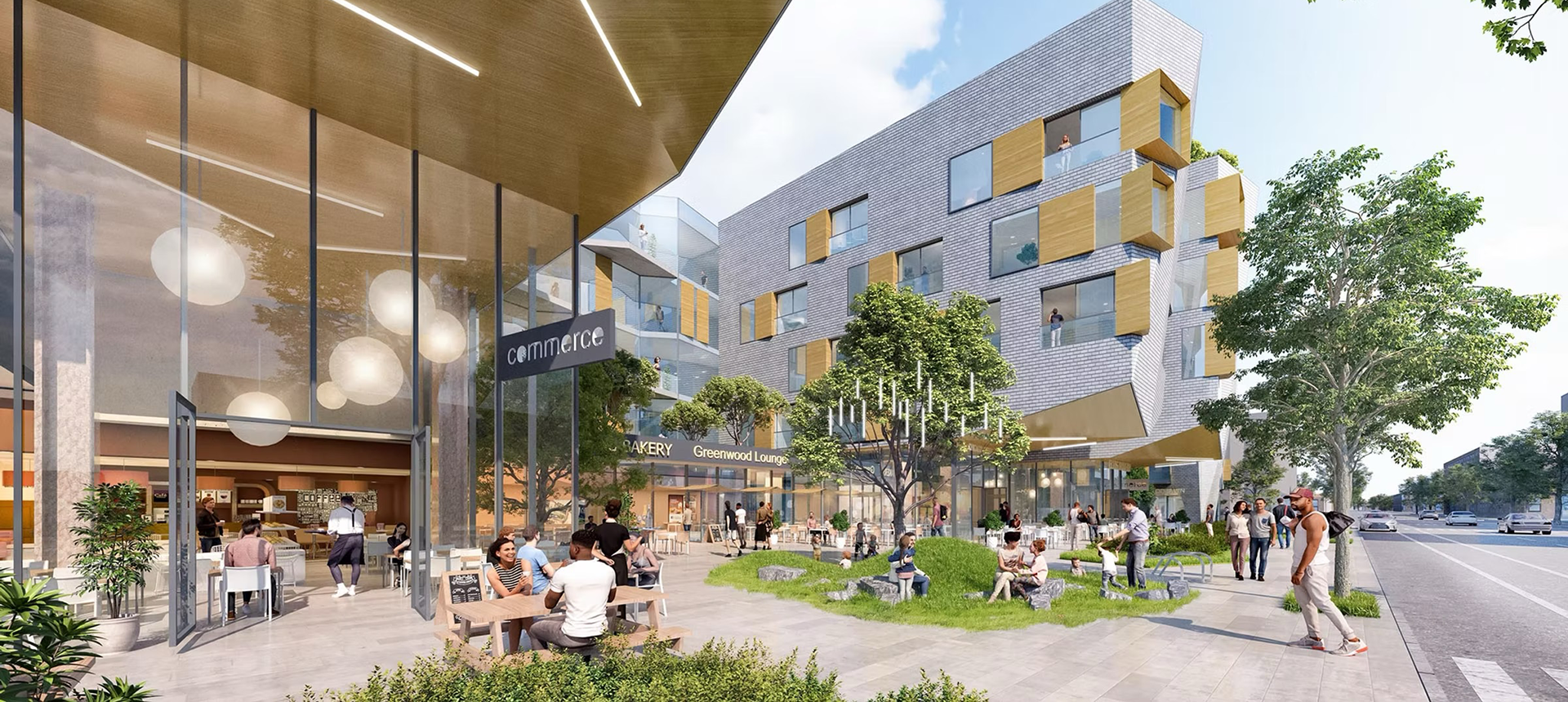Woodlawn Social
Level-1 designed future-ready infrastructure for a mixed-use development rooted in long-term community resilience on Chicago’s South Side.
There’s a difference between building in a neighborhood and building with it. One assumes presence is enough. The other listens before it draws.
Woodlawn Social doesn’t behave like a typical development. Not in its massing, not in its use, and certainly not in its ambition. It’s neither a singular project nor a complete answer. Rather, it gathers multiple futures under a shared canopy: apartments, commercial life, shared courtyards, thresholds of ownership and access.
But what does it mean to design for use in a neighborhood already used to being forgotten?
Perhaps it begins with restraint. As Woodlawn Social takes shape, Level-1’s role is not to brandish technology as progress, but to embed systems with enough longevity that they remain reliable and replaceable. The tech we design doesn’t ask for attention. It is meant to sustain and perform.
There’s a kind of architecture that draws you in, and another that compels you to remain. This project aims for the latter.
If Woodlawn is undergoing a renaissance, as planners like to say, then renaissance alone is not enough. Because we’ve seen what happens when renewal forgets to stay. So much of urban development arrives with fanfare and leaves with nothing to maintain. Level-1’s scope, while unapologetically technical, is about resisting that exit. About building systems that outlast enthusiasm.
What we’ve designed is infrastructure as a form of care. One that doesn’t end in occupancy and one that doesn’t need an audience to work.




